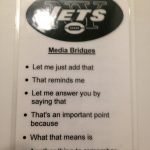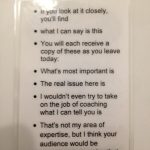Some of my favorite media stunts relate to Valentine’s Day. I’ll share examples in a moment, but first let’s examine the anatomy of how to construct a holiday focused media event.
They key is blending two unique components, or visuals, into the same story.
Part one is to identify the unique visuals for your organization that when someone sees it, they immediately think of you. An easy example for a transportation related company is its fleet of vehicles. When you see a FedEx truck, you know what they do without having to think about it. As it relates to a service business, when you see someone wearing scrubs and a stethoscope you immediately think of healthcare professionals.
Visuals for an ambulance service would be the ambulance itself, and a crew in uniform.
Part two is to list the visuals that are universally synonymous with set events or holidays. For example, a Christmas tree for Christmas or carved pumpkins for Halloween. Visuals for Valentine’s Day could be anything with a heart or romance related.
Now the hard part– create a media event combines your work related visual and the holiday visual in the same screen shot/story. Let me share a few examples.
Example #1: Learn Hands-Only CPR Today, Save Mouth-to-Mouth for Valentine’s Day.
This headline/teaser was used for one of my favorite media stunts. We had a paramedic in uniform standing in front of an ambulance, with a mannequin on a gurney in front of him so that we could teach how to do hands-only CPR. Surround the mannequin with lots of Valentine’s Day items like candy hearts, balloons, etc. By combining the ambulance service’s visuals with Valentine’s Day visuals and adding some puns, we made an every day story that media would normally ignore worth covering.
In addition to inviting media for the training, we created our own social media videos. I had one out-of-state operation send me video clips which I directed remotely and I edited them into the following YouTube video.
On this story, the local PIO gave me one of the greatest compliments I can recall. After sending out her media advisory for the event that included my recommended headline, one of the assignment desk editors responded telling her that the headline was in the running for their internal collection of best press advisory subject lines/headlines of the year.
Example #2: A Special Valentine’s Day Date.
One of my all-time favorite media stories was for an ambulance service that used its vehicle to transport a husband that lived in one nursing home to a special lunch with his wife that lived in another nursing home. You can watch that story here.
While it’s a great story that viewers loved, the true business benefit came from the process. In searching for a patient we increased the company’s awareness within care facilities to increase transport requests.
By offering the transport to a care facility, the administrator asked facility nurses and case managers if they knew of any transport candidates. The same nurses and case managers that choose which ambulance provider to call for scheduled transports. Even when they couldn’t find a candidate, they appreciated the thought and remembered who offered. The best case scenario was actually when a facility said they couldn’t identify a patient. This allowed us to start the process anew with another facility, getting us noticed by even more nurses and case managers.
Once the story ran, we then sent a link of the story to the care facility, resulting in numerous facility staff compliments and their thanks.
When planning your event, don’t make it more complicated than it needs to be. Simple and punny often get the best results. The best part is that once you find a formula that works for holidays, you can repeat the event year after year.


